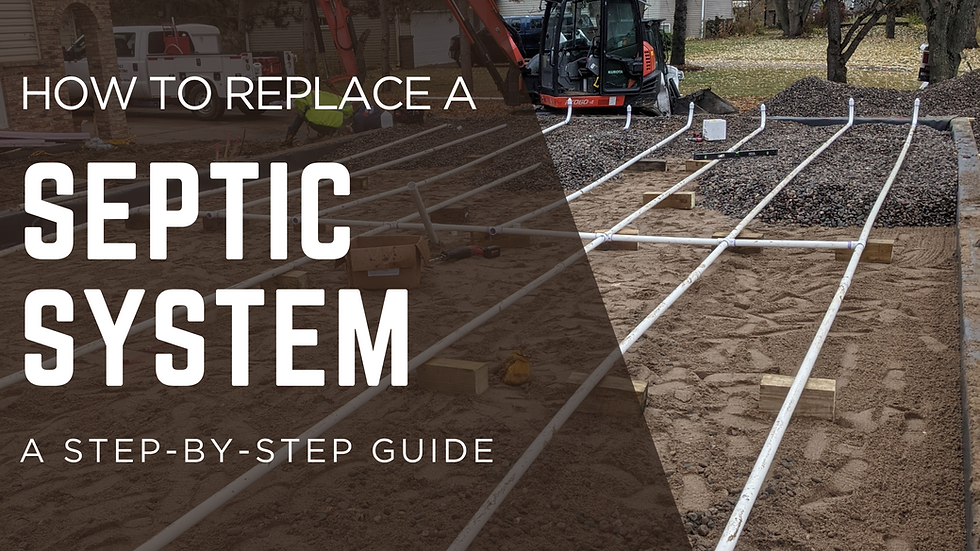How Do You Replace a Septic System? A Step-by-Step Guide in Plain English
- berresexcavating
- Jun 26
- 3 min read

How to Replace a Septic System: Simple Steps Every Homeowner Should Know
Replacing a septic system might sound intimidating—but with the right team and plan, it’s a manageable process that can add value, function, and peace of mind to your home. Whether your current system is failing or outdated, Berres Excavating is here to help you understand what happens when you need a new one.
In this blog, we break down how to remove and replace a septic system in simple, easy-to-follow steps.
Step 1: Get the Old System Inspected
Before digging anything up, a licensed septic inspector or designer will assess your current system. They'll determine what’s failing, what needs to be removed, and what your property needs based on soil conditions and current regulations.
Tip: In Minnesota, all new septic systems must be designed by a licensed designer before installation.
Step 2: Soil Testing and Design
The next step is a soil test, also known as a perc test (short for percolation). This test checks how well the soil absorbs water. Based on those results, a licensed septic designer will create a system that fits your property—whether it’s a mound system, drain field, or something custom.
Your soil type, space, and water table all play a role in what kind of septic system you'll get.
Step 3: Permit and Approval
Once the design is complete, the plans are submitted to your county or local health department for approval. This ensures your new system meets state and local septic codes.
Berres Excavating works closely with local agencies to ensure everything is properly filed and approved.
Step 4: Remove the Old System
Now the real work begins. Our team will:
Pump, crush, and abandon the old septic tank
Excavate the existing drain field (if necessary)
Dispose of all old materials in accordance with local guidelines
This step involves heavy equipment and temporary disruption to your yard—but we always work carefully to minimize impact and restore it back to how it was with premium grass seed or sod if you'd like!
Step 5: Install the New System
We then excavate and install the new septic tank, distribution lines, and drain field—or build a mound system if your soil requires it. Components are set carefully to match the engineered design.
Once installed, the system is:
Connected to your home’s plumbing
Connected to the alarm typically located inside your home near the electrical panel
Backfilled and graded to protect your landscape
Berres Excavating uses top-quality materials and precise techniques to ensure your new system lasts for decades.
Step 6: Final Inspection
A county, city, or third-party inspector will review the project throughout as well as the finished installation to ensure it meets all health and safety requirements. Once approved, you’ll receive documentation showing compliance for your records.
Always keep a copy of your septic system design and approval in case you sell your home or need service later.
Step 7: Restore and Maintain
After the new system is in the ground, we’ll restore the work area and give you tips on how to maintain it. This includes:
When to pump your tank
What to flush (and what not to)
How to protect your drain field
Time for a New Septic System?
At Berres Excavating, we make septic system replacement simple, honest, and professional. We partner with licensed designers, follow Minnesota regulations, and treat every home like it’s our own.
📍 Based in Isanti, MN – Serving Rochester, Andover, and surrounding areas
📞 Call today: 612-801-6939
📧 Email: info@berresexcavating.com





Comments